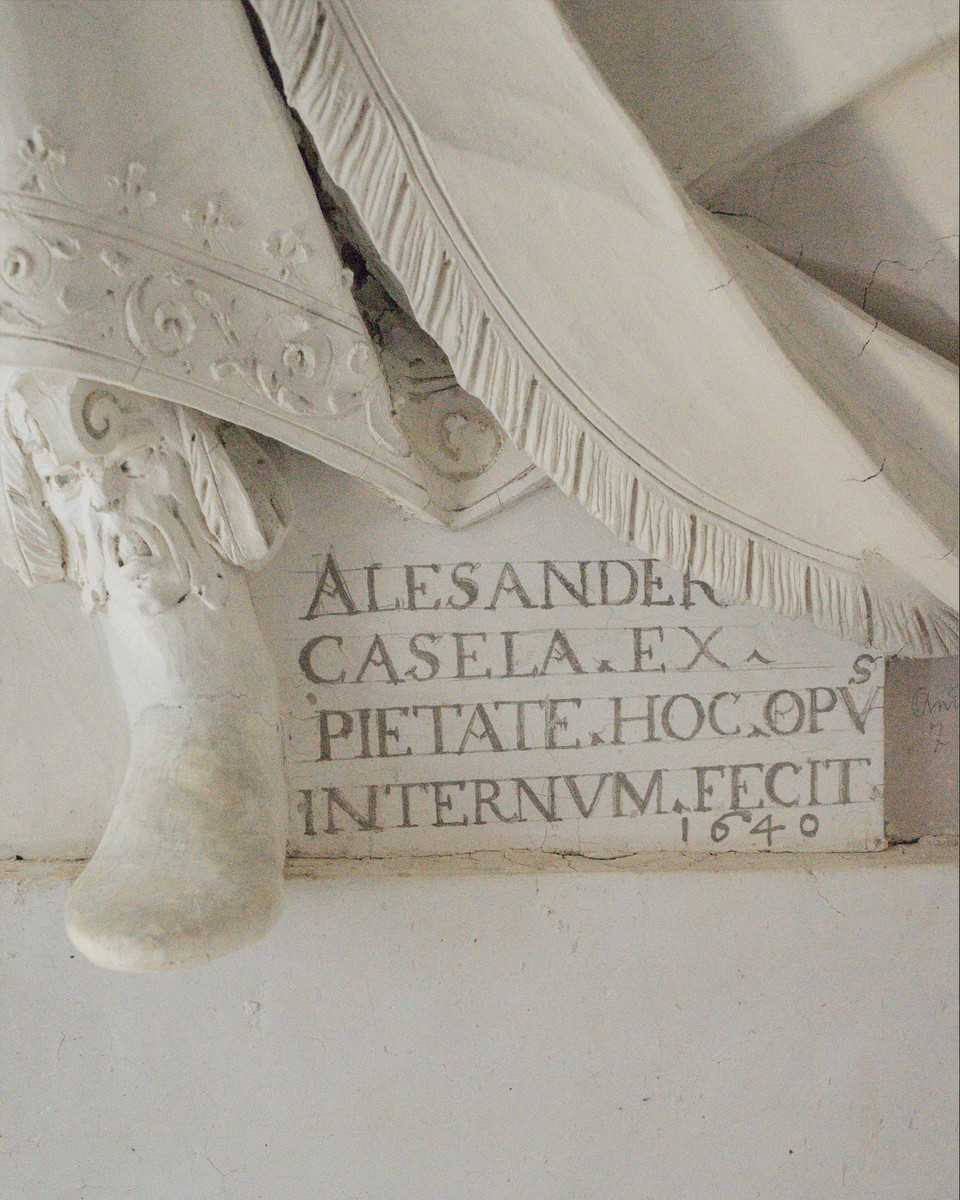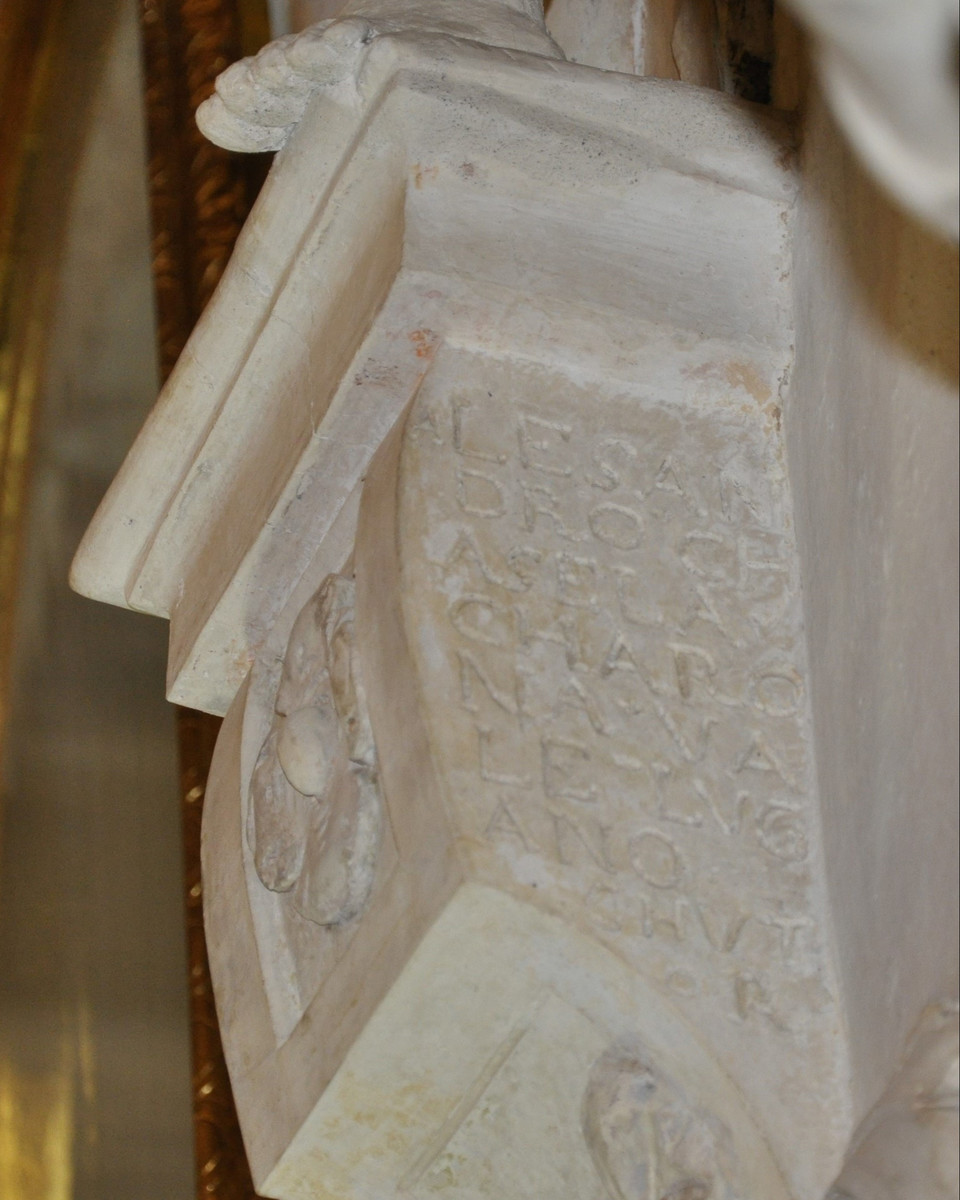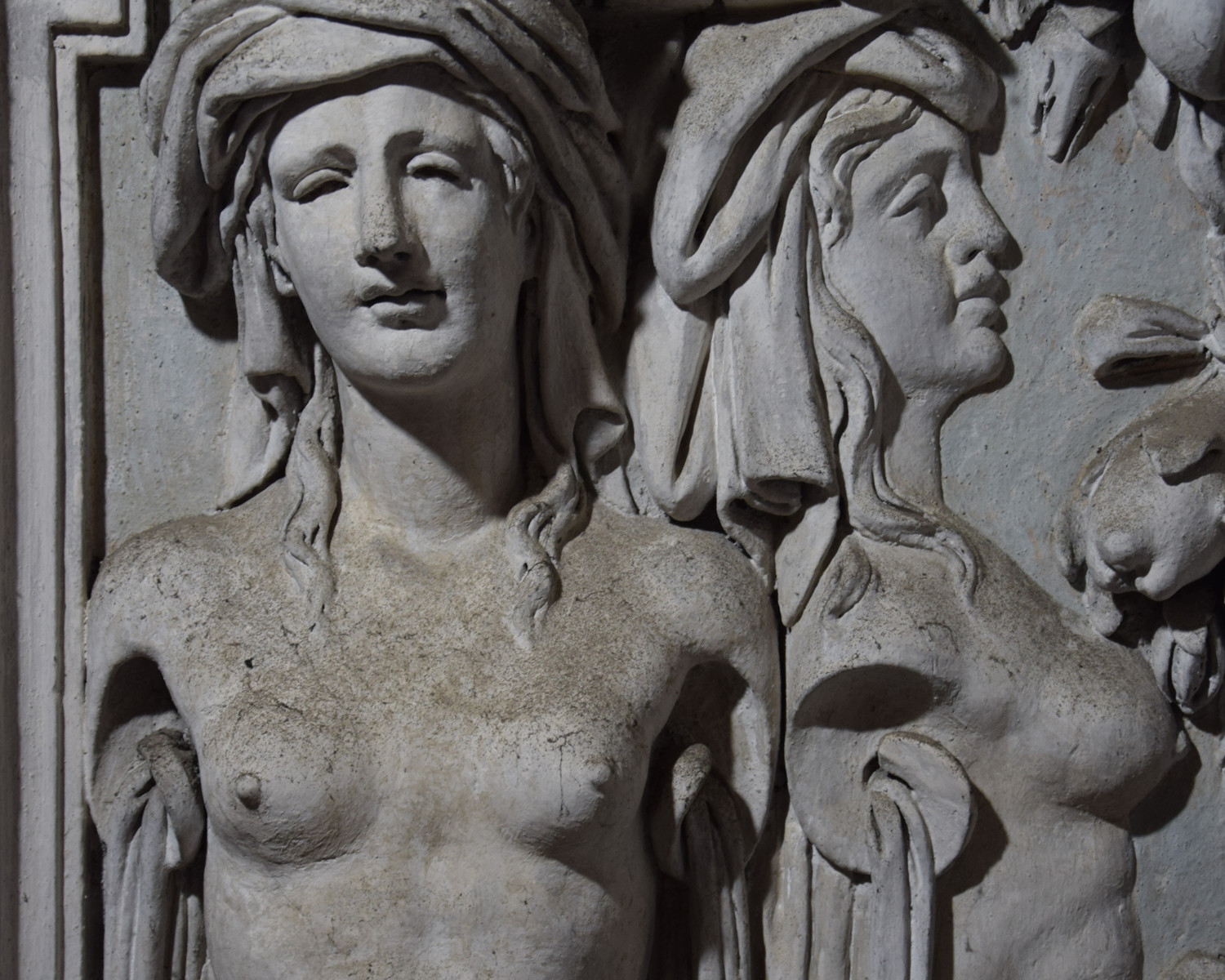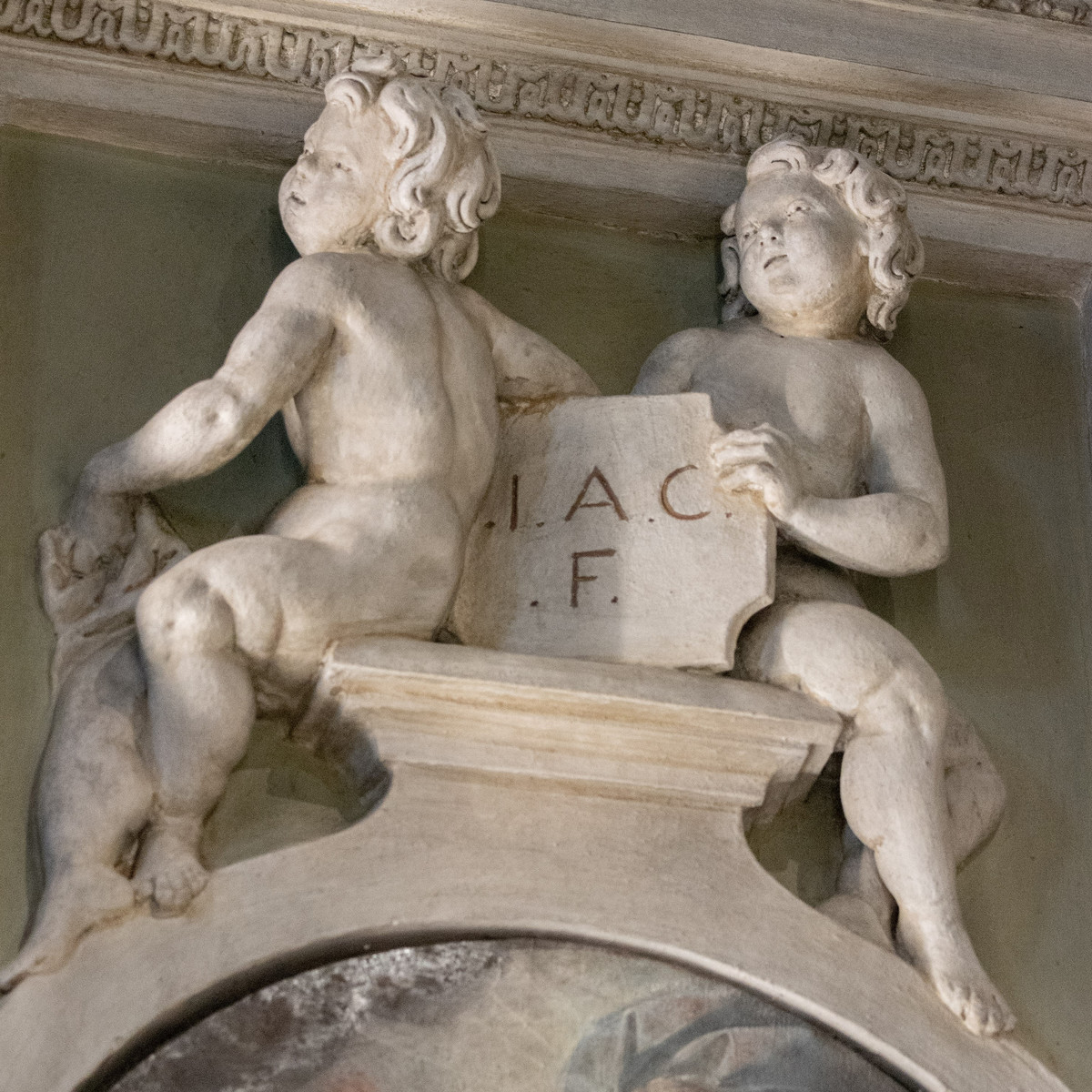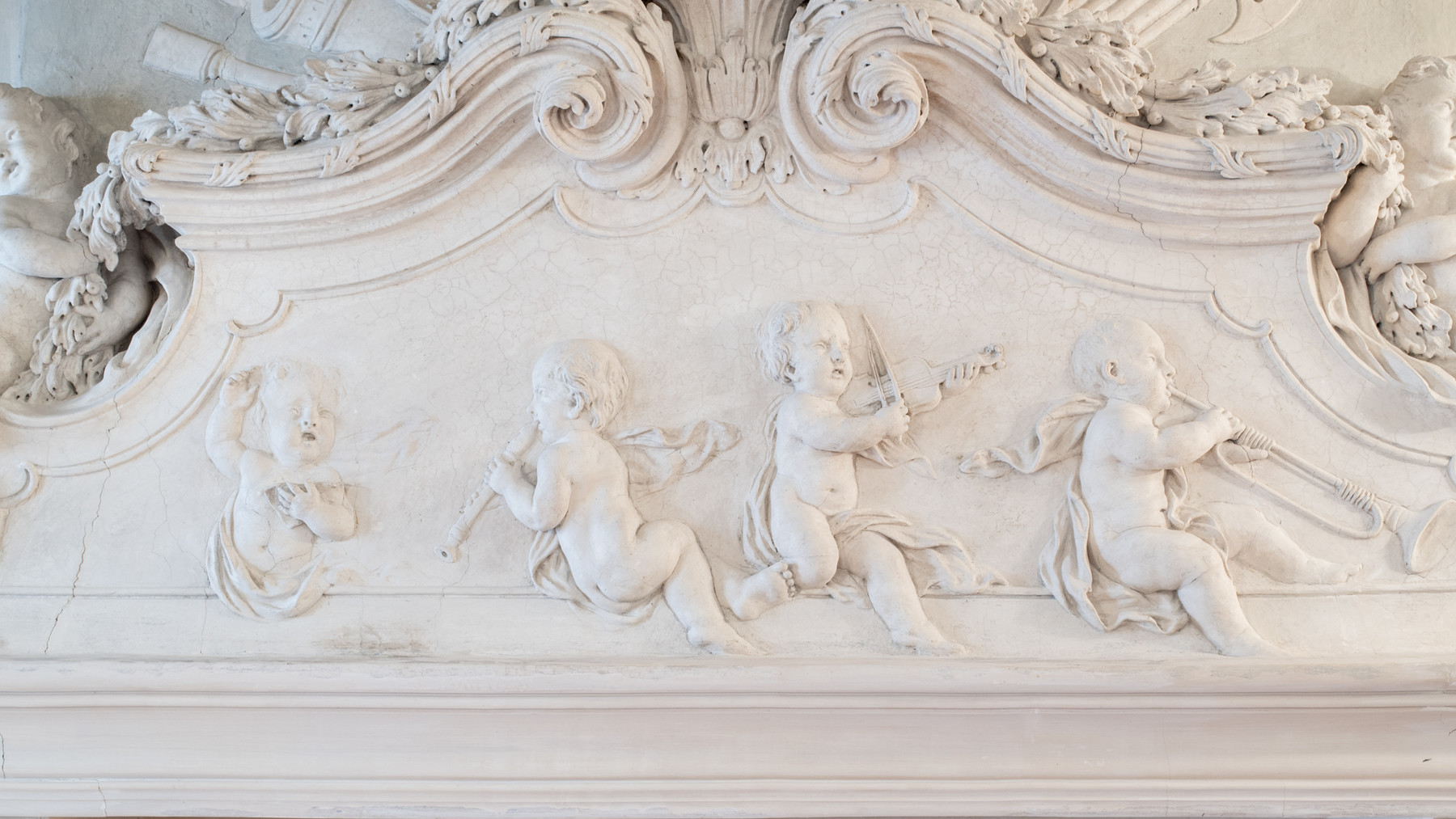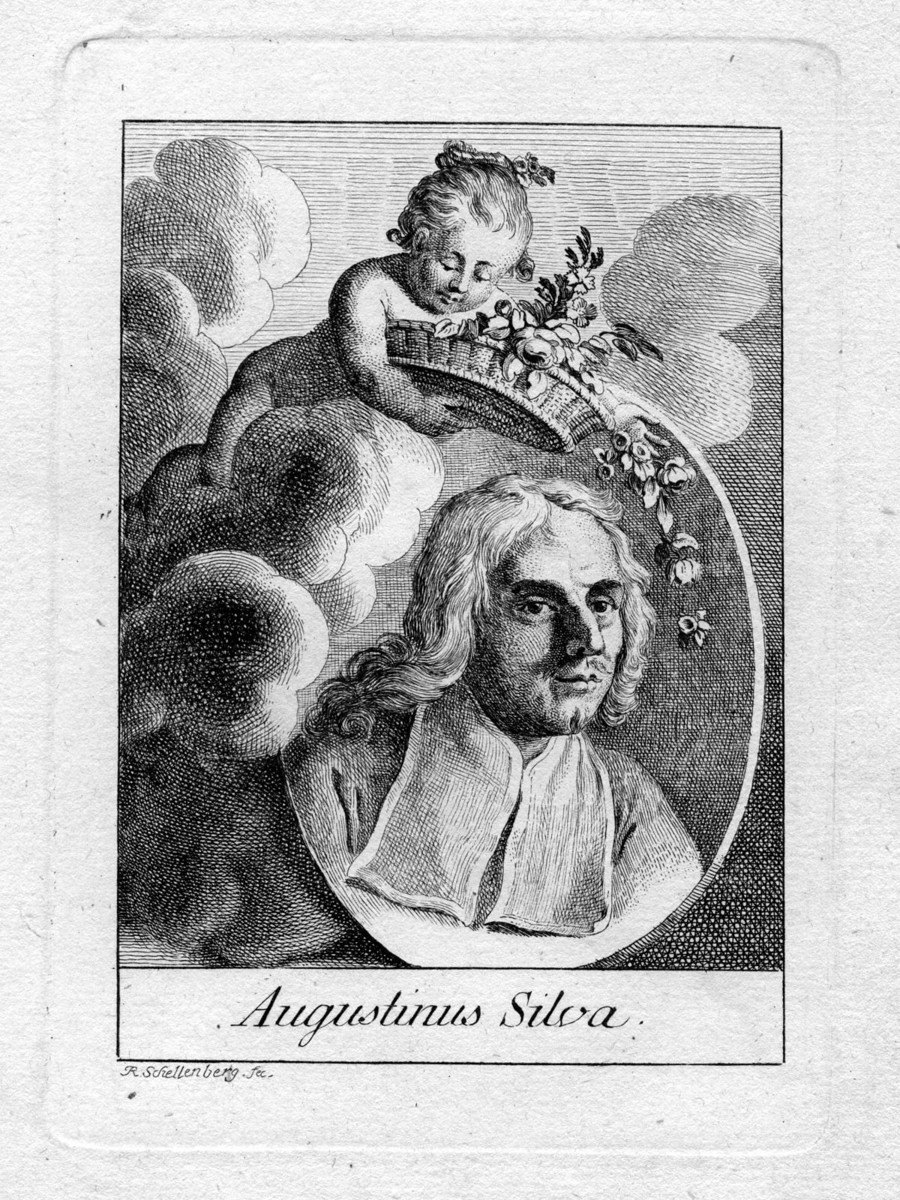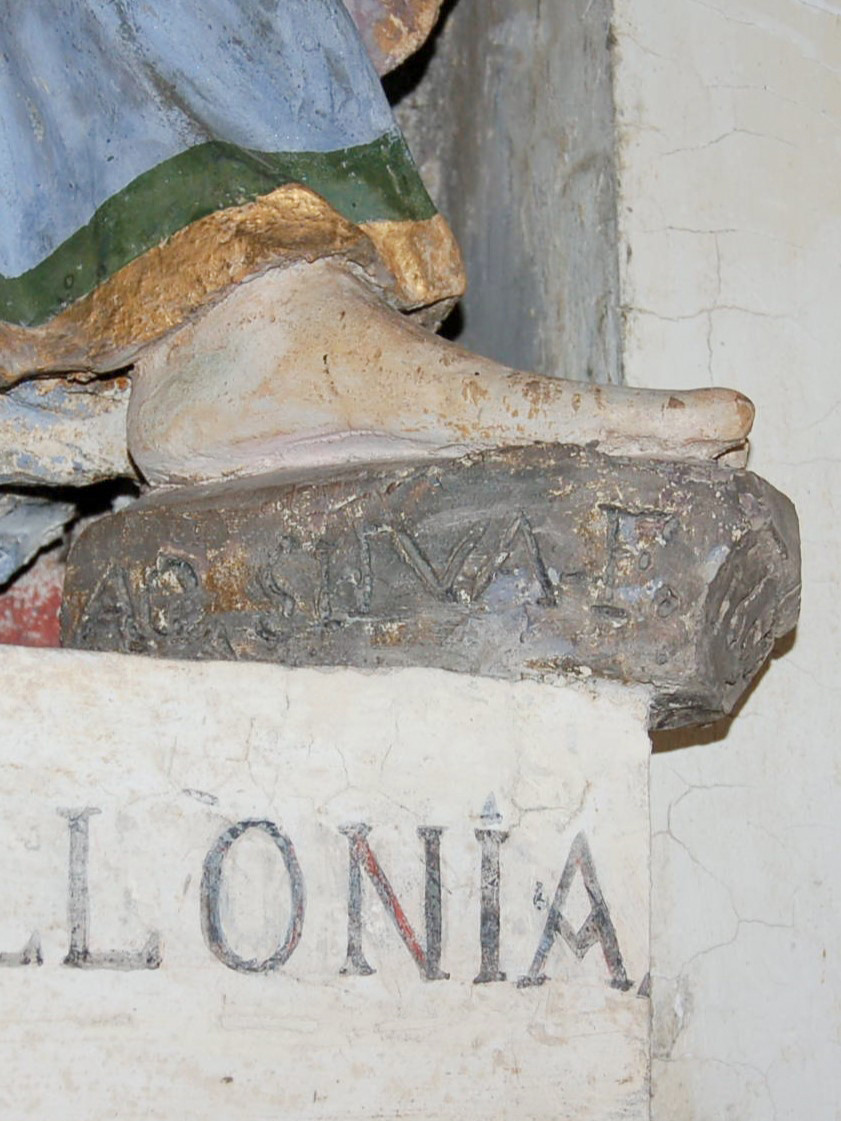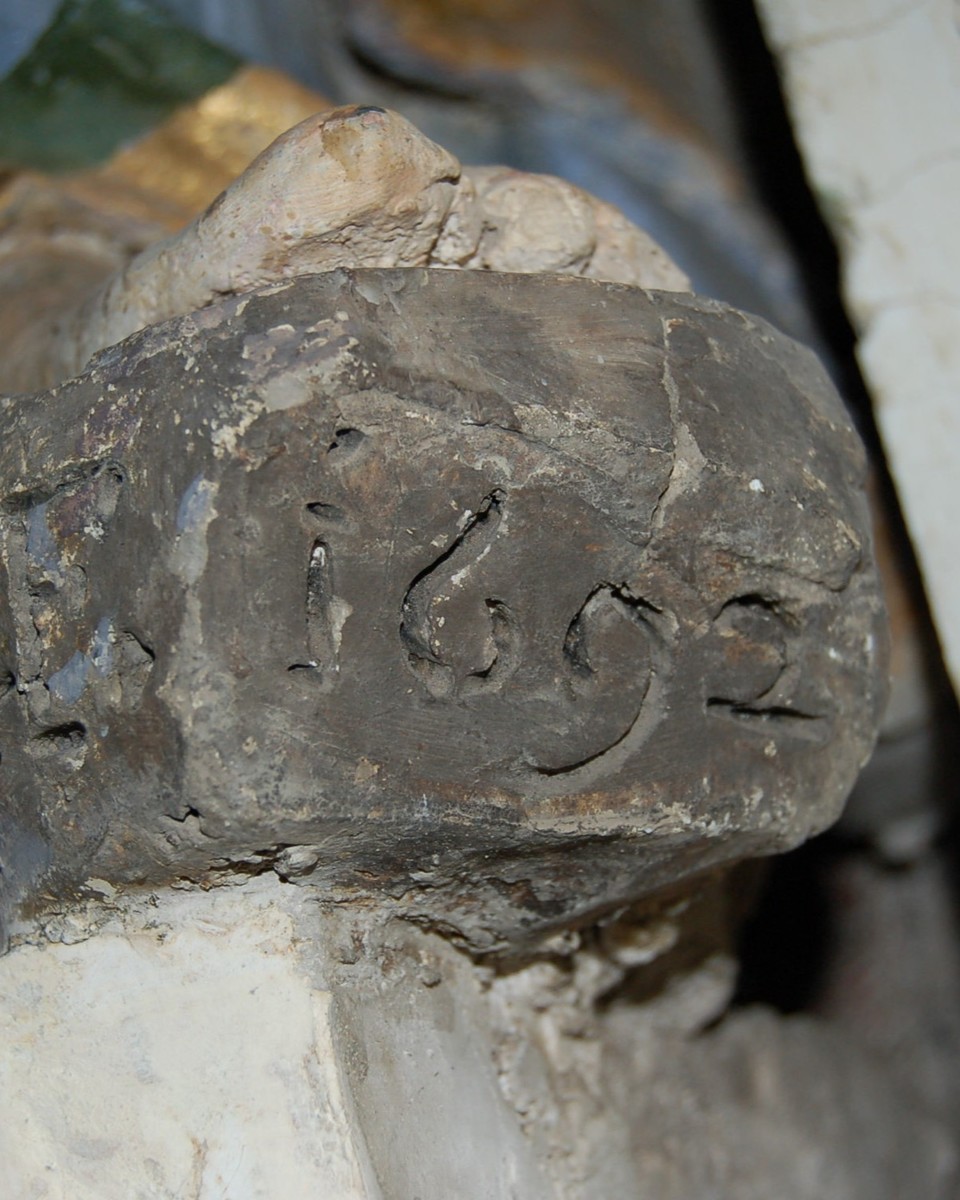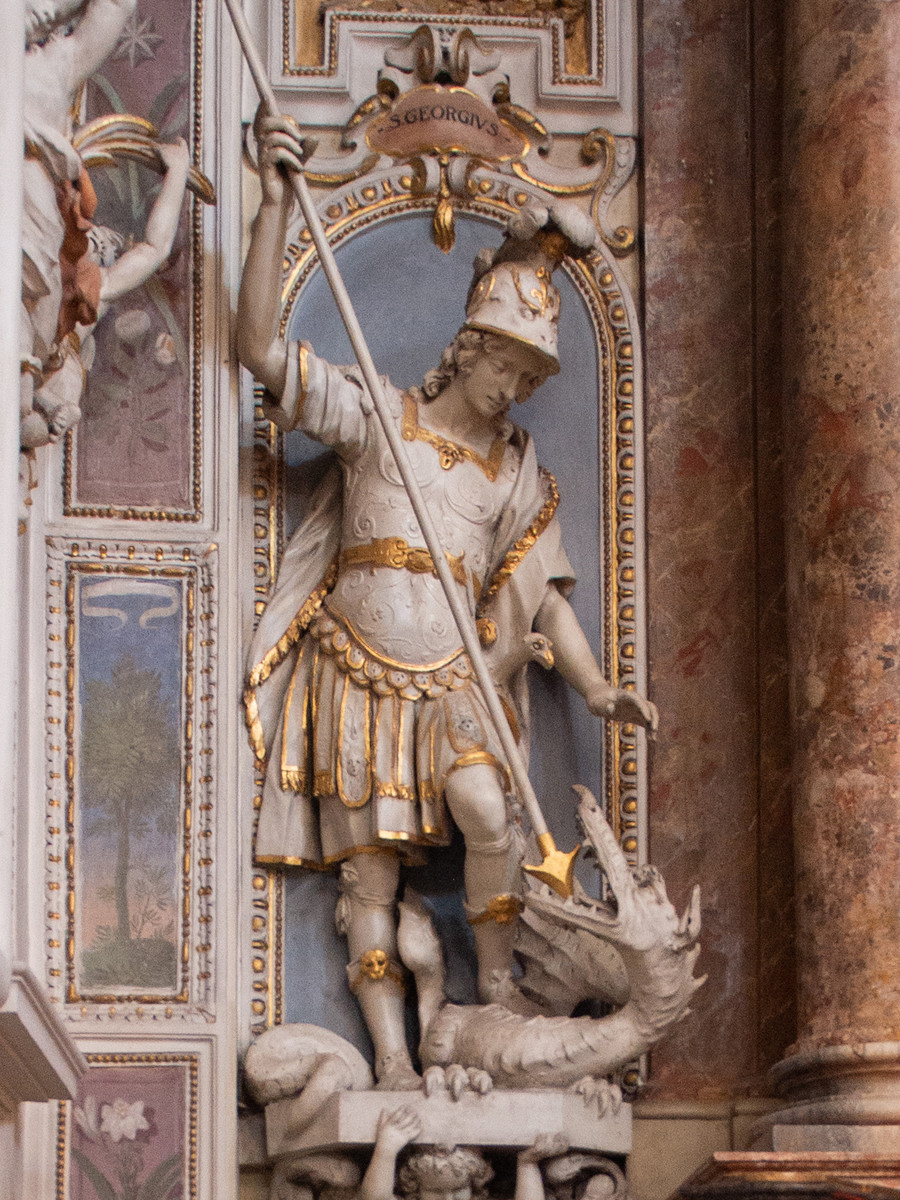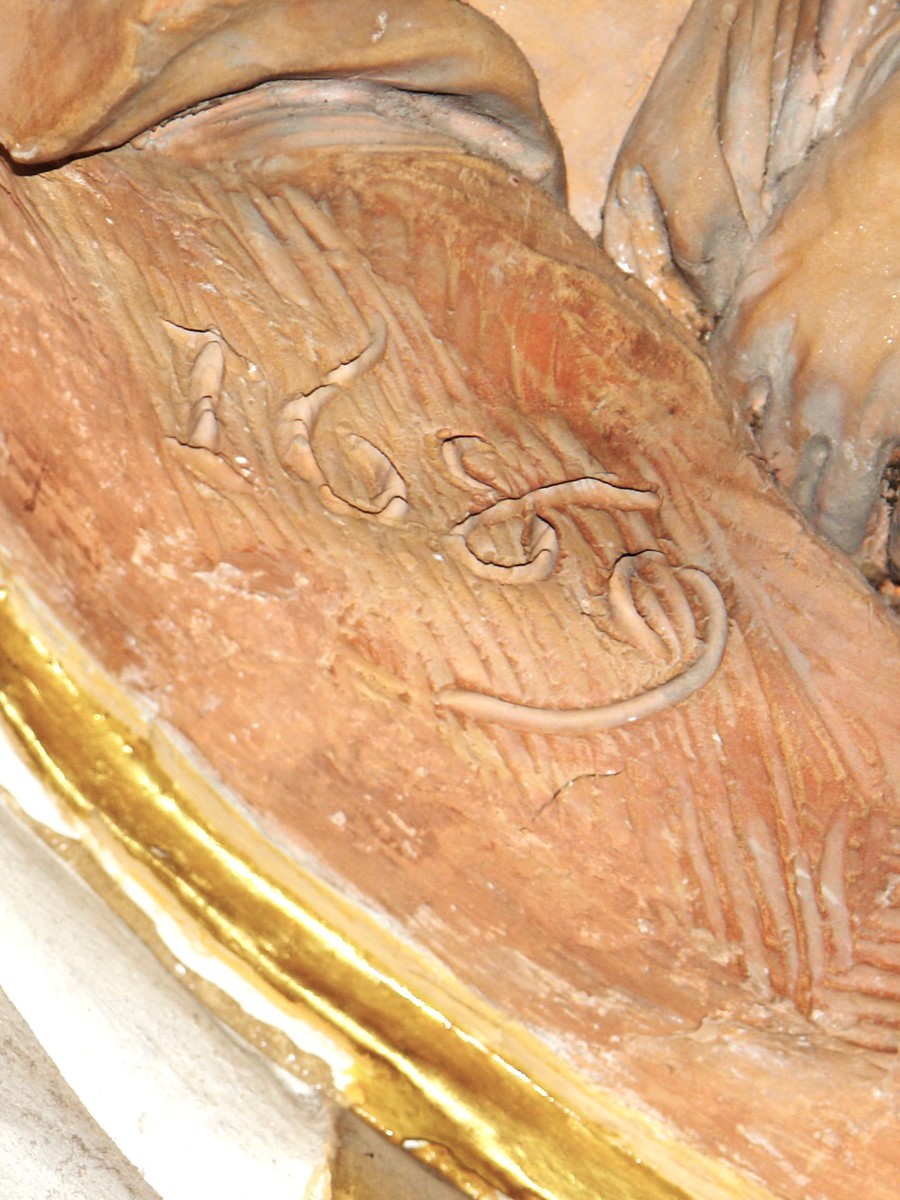Casella Alessandro
Alessandro Casella was born in 1596 in Carona, home town of many architects, sculptors, plasterers and stone-masons. From the second half of the 16th century, these masters travelled throughout Europe, operating in a highly-structured system of family workshops. Alessandro was the son of Giovanni Antonio and grandson of stonemason Alessandro, all of the Casella “del Pozzo”. In 1617, barely 20 years of age, he married Violante, daughter of the sculptor Pompeo Solari del Curto. Alessandro’s first works are documented two years later, when he operated with Bernardo Bianchi di Campione on two almost contemporary building sites, in Albosaggia (Chapel of San Carlo in the Church of Santa Caterina) and in Ponte in Valtellina (presbytery of Santa Maria di Campagna). The two stuccatori continued their collaboration for more than a decade on some of the most important churches in the middle and upper Valtellina, often carrying out renovations to the design of Carona architect Gaspare Aprile: for example in the Collegiate Church of Sondrio (1622-1623) and in the Church of San Martino in Castione Andevenno (1623-24, 1626, 1628-1629). Casella closed the 1620s with his most impressive work, unfortunately only partially preserved, on the Church of the Madonna della Neve and San Carlo in Chiuro, begun in 1628 and probably interrupted by the arrival of the plague. In Valtellina, Casella began expanding the range of his expression still further, notably in the modelling of figures. These skills being seen, he was called for some ducal commissions in Turin, from 1634. In Piedmont he was recognised as a sculptor, and it was as 'schultur' that he signed his name in the Church of Carmine in Invorio, in 1642. His works were culminated with the stucco decorations of Valentino Castle, executed through the second half of the 1640s but completed by his son Carlo. It was around this same time that he demonstrated his skills in his home town, in the stuccoes of the presbytery of the Madonna d'Ongero. He died, probably in Carona, in the winter of 1656-1657.
For more information
– Bianchi F., Agustoni E., I Casella di Carona, Lugano 2002.
– Aliverti L., Felici A., Nicoli G., L’attività degli stuccatori ticinesi Alessandro Casella e Bernardo Bianchi in Valtellina, in Arte e fede in Valtellina. Sette secoli di storia nella chiesa di San Martino a Castione Andevenno, Sondrio 2019, pp. 119-141.
– Romeri M., Il percorso di Alessandro Casella dalla Valtellina al Valentino, Torino 2022, Fondazione1563.
Casella Giovan Battista
Documented from 1550 to 1602, the sculptor, plasterer and entrepreneur Giovanni Battista was originally of the branch of Casellas from Carona village, known as 'de Annibale'. Giovanni was the son of Antonio and sibling of Andrea and Bernardo. The brothers joined for several commissions, among which his first known work, the baptismal font for the Collegiate Church of Castel San Giovanni near Piacenza, dated 1550 and made with Bernardo.
Giovanni is later documented in Rome, working on important building sites as a stuccatore, among these Palazzo Salviati alla Lungara, probably executing cornices, mouldings and decorative elements. At this site, however, he also gained a managerial role, coordinating other workers. In this same phase he collaborated on the remaking of a frieze in the so-called Aeneas Room in Palazzo Capodiferro Spada. He worked again with his brother Bernardo in the Monastery of Santa Marta, on a series of decorative works, sadly lost in the 1930s. Back in home town Carona, he demonstrated his success in the Roman context through the embellishment works of the parish church: he was mayor of the Church of San Giorgio when the painter Domenico Pezzi was called for painting a Last Judgement, an early copy of Michelangelo's Sistine model. In this same church, the stuccoes of the chapel to the left of the choir, dedicated to the Virgin of the Rosary and completed in 1591, and those of the Scala chapel, to the right of the choir, still in progress in 1591, are probably by Battista himself. Both complexes are enriched by references to the figurative culture of Roman Mannerism, assimilated by the artist in the course of his career.
For more information
– Barchi E., Un antico fonte battesimale di Bernardo e Battista Casella di Val Lugano, in «Archivio Storico Ticinese», Lugano 1960, pp. 123-124.
– Bianchi F., Agustoni E., I Casella di Carona, Lugano 2002, pp. 132-147.
– Quagliaroli S., Colore, stucco, marmo nel Cinquecento. Il percorso di Giulio Mazzoni, Roma 2022, p. 97, n. 56.
Colomba Giovanni Antonio
Giovanni Antonio Colomba was born in Arogno in 1585. He trained with his father Andrea, active in Brescia where he realises some his first documented worksites: in the Old Cathedral, where the son did the stucco decoration of the Chapel of the Santissime Croci (1602); in the left aisle of the Basilica of Santa Maria delle Grazie, and for the stuccos on the nave vault (1617).
In Ticino, his only well documented work dates to 1615: the stucco decoration of the presbytery vault of the of the Oratorio di San Nicolao, above Mendrisio.
Around 1625, he decorated the Chapel of the Madonna of the Rosary in the Church of Santo Stefano in Arogno with stuccos; in the same church, he made the statues of St. Peter and St. Paul, the Annunciation at the top of the triumphal arch, the four Doctors of the Church in the choir lunettes, the stucco framing of the two paintings on the side walls of the choir (1640) and the altar in the Chapel of the Three Kings (1640-1645).
Between 1632 and 1634 the artist was in Valenza, where he made the altar of the Blessed Sacrament and the Altar of the Immaculate Conception in the Collegiate Church of Santa Maria Maggiore.
He then returned to his homeland, where he worked on a series of building-sites: for the Oratory of San Rocco in Bissone, where he made the statues of St Michael and St Sebastian (1636-1644); in the Parish Church of San Pietro in Maroggia, for the main altar and the two side chapels dedicated to St John the Baptist and the Rosary (around 1640); in the Oratory of San Michele in Arogno, for the altar with statue of St Michael (1647), and in the Parish Church of Saints Vitale and Agata in Rovio, in the Chapel of the Madonna.
Several works in the province of Como are also attributed to Colomba: in the Parish Church of Saints Siro and Margherita in Codogna; in the Church of the Beata Vergine Maria Assunta in Puria Valsolda; and in the Church of San Lorenzo in Laino.
The stucco artist's deep bond with his home town, and in particular with the church of Santo Stefano, is testified by the role of 'church mayor' he held from 1640 until his death (Arogno, 30 March 1650).
For more information
– Brentani L., Antichi maestri d’arte e di scuola delle terre ticinesi: notizie e documenti, vol. VI, Lugano 1957, pp. 7-57.
– Martinola G., Inventario delle cose d’arte e di antichità del distretto di Mendrisio, Lugano 1975.
– Pedrini Stanga L., I Colomba di Arogno, Lugano 1994.
Fontana Baldassarre
Baldasarre Fontana was born in Chiasso on 26 June 1661. With his wife, Maria Elisabetta Gilardoni, married in 1689, he had four children. Fontana’s artistic training is poorly known. Although there is no documentation testifying to a residence in Rome, his oeuvre does demonstrate a good knowledge of the works of Bernini and his circle in that city.
Fontana’s first known work is the decoration of three interiors of Hohenaschau Castle in Bavaria (1683 or 1688), and it was around this time that he began activity in Moravia, working for the Bishop of Olomouc, Karl Liechtenstein-Castelcorno. A probable first work in Moravia was the decoration of the church in Stará Voda, completed in collaboration with Matteo Rezzi in 1688. This would have been followed by a chapel at Hukvaldy Castle and the. Chapel of St. Ottilia in the Parish Church of Vyškov, both completed in 1692. In 1690-1691 he received the important commission for decoration of the Bishop's Palace in Kroměříž, including the stucco-work of the ground floor rooms, the great hall and eight other rooms on the “noble” floor (1691-1695, now destroyed). For this project, Baldassare worked with his brother Francesco (b.1666-d.1697), to a design by Antonín Martin Lublinský. In 1693, Fontana (with an otherwise unknown Pakosz Trebeller) executed his first work in Poland: a chapel in the Wieliczka town church (since destroyed). Beginning two years later and lasting until 1703, he was engaged in what would be his most important work, on the Church of St Anne in Krakow, based on plans by Sebastian Piskorski and executive drawings by Jerzy Szymonowicz-Siemiginowski. Thanks to Piskorski's support, Fontana also received important commissions for the churches of the Poor Clares in Kracow and Stary Sącz, and probably for some other commissions in the capital city: for the stuccoes in the churches of the Dominicans (Chapel of St. Hyacinth), the Carmelites (for both the Discalced Carmelites and the Old Order), the small church in Ludwinów and the Wodzicki, Żydowski and Zaleski palaces. In this same city, the Italian Brotherhood also entrusted him with the decoration of the chapel in the Monastery of Friars Minor (1697-1699).
After this interlude, Fontana returned to Moravia, working for the Premonstratensian monastery in Hradisko. In 1703-1704 he executed the stucco work in the library, creating one of his most remarkable works, and also in the monastery church (1718-1731), sacristy (1726) and refectory (1727). Still in the early years of the 1700s, Fontana decorated Heisler Castle in Uherčice, Berchtold Castle in Police, Petřvald Palace in Buchlovice and the church in Podhradní Lhota. In 1708 he worked for the Franciscans, in the monastery refectory in Uherské Hradiště and in the chapel of their church in Olomouc, where he also executed the Portal of Our Lady at the cathedral. In 1727-1728, he decorated several interiors of the Canons' Monastery in Šternberk. His last major commission came from the Cistercians in Velehrad, for work on the monastery church (1724-1730) and the abbot's chateau in Brněnské Ivanovice (1725-1726). Fontana died on 6 October 1733 in Chiasso. (Michał Kurzej)
For more information
– Karpowicz M., Baldasarre Fontana 1661–1733. Un Berniniano Ticinese in Moravia e Polonia, Lugano 1990.
– Švácha R. , Potůčková M., Kroupa J. (eds.), Karl Von Lichtenstein-Castelcorno (1624–1695). Places of the Bishop's Memory, Olomouc 2019.
– Kurzej M., Baldassarre Fontana in Cracow, in G. Jean and A. Felici (eds), The Art and Industry of Stucco Decoration in Europe from the Late 15th to the Middle of 18th Century, Roma 2025, 341-359.
Silva Agostino
Born in Morbio Inferiore on 11 November 1628, Agostino Silva served an apprenticeship in his father's workshop. After the death of the elder Silva, around 1643, he appears to have moved to Rome. With wife Margherita Silva, married in 1651, he had six children.
Agostino led an intense and highly successful career, producing numerous stucco decorations as well as terracotta statues and designs for altars and architecture, in Ticino, Lombardy and Central Italy. Around 1650, he decorated the chapel of Saints Peter and Paul in the Church of Santa Maria dei Miracoli in Morbio Inferiore, where he would continue active as both artist and administrator. His relations with the Odescalchi were always close, and in 1661, he completed the decorations for their family chapel in the Church of San Giovanni Pedemonte. In 1662-1663 he was commissioned by Alessandro Torriani for several statues; from 1663 to 1665 he is documented in the building site of the Sacro Monte of Ossuccio; in 1666 in the cathedral of Como; other works are also known in Canton Ticino.
Between 1670 and 1676 he was in Spello, Assisi, Foligno and Urbino, all in central Italy, and during these years he regularly returned to his homeland. In 1677, he drew up the plans for the Church of Sant'Eusebio in Castel San Pietro. Subsequently, intensively engaged between Ticino and Lake Como, his important works included the presbytery of the Parish Church of Careno (1683-1684), the Chapel of the Madonna in Castel San Pietro (completed in 1685), the Church of San Giuliano in Como (1687), the design for the tabernacle of the Church of San Lorenzo in Lugano (1689), the Chapel of Saints Francis and Anthony Abbot in the Parish Church of Domaso (1692-1693) and – roughly simultaneously - the Parish Church of Vercana. In 1684 he was in Turin, where he worked on the stucco decorations in Palazzo Carignano. In 1695-1696 he worked in Bassa Valtellina, where he is documented in the Parish Church of Civo, then in Roncaglia, Chiuro and Chiavenna. In 1701 he was at the Sacro Monte of Varese, where he 'rebuilt' the statues made by his father, and the following year at the Sacro Monte of Oropa. Agostino Silva died in Morbio Inferiore on 6 February 1706. His intense professional activity had allowed Agostino to accumulate a substantial wealth, including properties, estimated at almost 37,000 lire.
For more information
– Gavazzi Nizzola S., Magni M., Contributo all’arte barocca ticinese: Agostino Silva da Morbio Inferiore, in «Arte Lombarda» Milano 1974, pp. 110-129.
– Aliverti L., Agostino Silva plasticatore (1628-1706). Il contesto, le opere, i materiali, le tecniche costruttive e la conservazione, Ph.D. thesis, Politecnico di Milano 2008.
– Aliverti L., Felici A., Jean G., L’impresa dei Silva di Morbio, in Nicoletti M. F. e Verde P. C. (eds.) Pratiche architettoniche a confronto nei cantieri italiani della seconda metà del Cinquecento, Milano 2019, pp. 95-118.
Silva Francesco
Francesco Silva, born in Morbio Inferiore in the 1580s in a year not precisely known, worked through the first half of the 1600s in Central Italy, Canton Ticino and Lombardy. He is credited as the founder of the great Silva family of plasterers, sculptors and architects.
After his training, probably in Rome, he is first documented in 1611 in the Basilica of the Santa Casa of Loreto, where he collaborated with Pomarancio. In the years following, Francesco Silva pursued an intense activity in the Papal States. Rare documents identify him as Francesco Selva milanese or de partibus Lombardiae. Between 1613 and 1620, he worked in Foligno, in the Cathedral of Faenza, in the Cathedral of San Venanzio in Fabriano and in the Chapel of San Giuseppe in the Cathedral of Nocera Umbra .
Married with Giovanna Silva in 1616, the couple had four children. Between 1613 and 1627, he participated in the decoration of the Sanctuary of the Miracles in Morbio Inferiore. Here, he is attributed with the altar of the Chapel of the Madonna, the main altar and the adjacent statues, and the stucco angels on the arches leading to the chapels. In this location we can see his signature work: "a singular cherub with spread arms, placed here on the festooned capitals of the altar".
Beginning in 1604, he completed nearly 100 terracotta statues for the ten chapels of the Sacro Monte in Varese, plus other works in neighbouring areas. His permanent return to Canton Ticino likely came in 1620. In Villa Coldrerio, he decorated the Oratory of Carmel; in 1621, he made the statues for three chapels of the Sacro Monte in Locarno. In his later years he worked in Alto Lario and Valtellina; in 1626 he is documented in Vercana, then in 1629 in Garzeno and Montagna. Also attributed to Silva are the decorations of two fireplaces in the Odescalchi Palace in Como,e and the statues of the first three chapels of the Sacro Monte di Ossuccio. Between 1640 and 1641 he worked on the Assumption of the Virgin in the right transept of the Cathedral of Como. The precise date of the artist's death, probably between 1643 and 1651, remains unknown.
For more information
– Colombo S.A., Francesco Silva, in Coppa S. (ed.), Il Secondo Cinquecento e il Seicento. Civiltà artistica in Valtellina e Valchiavenna, Bergamo 1998, pp. 264-265.
– Agustoni E., Proserpi I., Il Santuario di Santa Maria dei Miracoli e il suo apparato decorativo, in Santa Maria dei Miracoli Morbio Inferiore. Arte storia messaggio, Morbio Inferiore 2003, pp. 45-84.
– Colombo L. , La produzione in Italia centrale di Francesco Silva stuccatore ticinese, master thesis, Università degli studi di Milano, Facoltà di Lettere e Filosofia, 2002-2003
– Gavazzi Nizzola S., Magni M., Aggiunta al catalogo dei Silva stuccatori Morbiesi. Nuove attribuzioni e considerazioni, in «Archivio Storico Ticinese», Bellinzona 2004, pp. 309-326
Silva Gianfrancesco
Gianfrancesco, son of Agostino Silva, was born in Morbio Inferiore on 7 April 1660. His training in Rome, probably in the workshop of Antonio Raggi, is confirmed by a 1677 letter of recommendation from Beatrice Odescalchi. Following this he worked in Padua and then returned to Morbio. Here he began a fruitful collaboration with his father, for the presbytery of the Parish Church of Careno in 1683; in the Parish Church of Domaso between 1691 and 1692, and for the Church of Sant'Andrea di Civo in 1695. He was most likely present on other Ticino worksites during these same years. In 1689, he signed the four terracotta medallions in the choir of the Church of Santa Maria dei Miracoli in Morbio Inferiore. Given the stylistic similarity, he is also attributed the terracotta medallions in the Oratory of the Holy Trinity in Castel di Sotto (Novazzano). Between 1692 and 1705 he created the stuccoes in the Oratory of Sant'Anna in Morbio Superiore. In the early years of the 18th century is again documented in Civo, together with his father, in the chapel of San Carlo and in the presbytery of the Parish Church of Sant’Andrea.
His was first married in 1700 to Maria Porta, then again to Maria Francesca Calvi: from the two unions there were five children. Letters testify to his occasional presence in Canton Ticino. In 1722, his work is documented for the private chapel of Villa Odescalchi in Fino Mornasco, where he created both the architectural decorations and the figured stuccos. In the following years, he seems to have been active in Bohemia and Cologne. He died in Bonn in 1738.
Other attributions are for the statues in the seventh chapel of the Sacro Monte in Ossuccio, and for some stuccoes in the Parish Church of San Siro in Bruzella in Muggio Valley. He was also probably engaged for two works that no longer exist: in Bologna, for the decorations of the Altar of the Crucifix in Santa Maria della Carità (1684), and in Faenza for the Altar of Sant'Anna in Sant'Agostino.
For more information
– Agustoni E., Proserpi I., Decorazioni a stucco del Settecento nel Luganese e nel Mendrisiotto, in «Arte+Architettura in Svizzera», n. 3, Milano 1995, pp. 270-285.
– Bonavita A., Leoni M., Ricerche intorno alle architetture Odescalchi, in Gli Odescalchi a Como e Innocenzo XI. Committenti, artisti, cantieri, Como 2012, pp. 66-147.
– Vanoli P. , Gli Odescalchi a Como: committenze, artisti, collezionismo tra Sei e Settecento, in Gli Odescalchi a Como e Innocenzo XI. Committenti, artisti, cantieri, Como 2012, pp. 21-44
